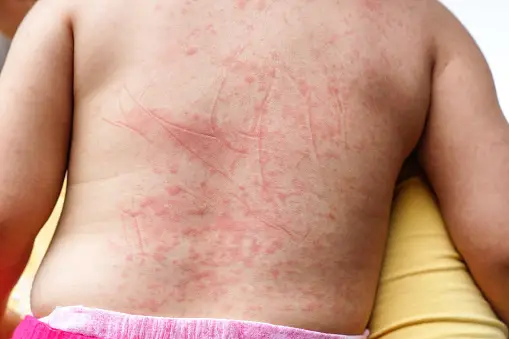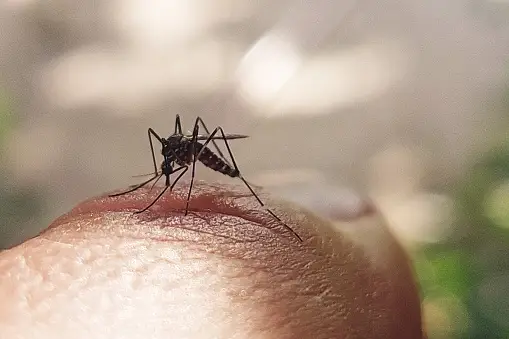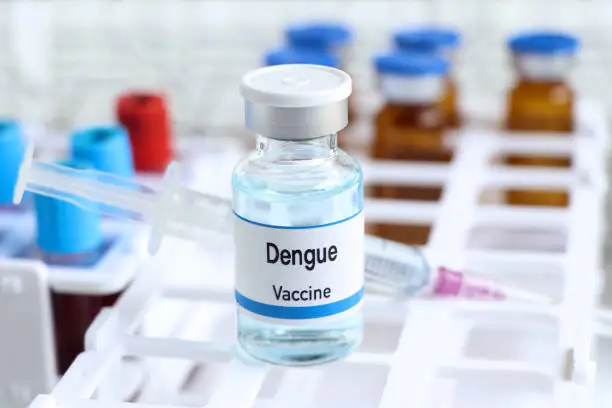Dengue fever is a rapidly spreading mosquito-borne viral disease that poses a significant public health threat worldwide, particularly in tropical and subtropical regions. Caused by the dengue virus, which is transmitted primarily by Aedes aegypti and Aedes albopictus mosquitoes, the disease manifests with a sudden onset of high fever, severe headache, pain behind the eyes, joint and muscle pain, rash, and mild bleeding. Dengue fever can range from mild to severe, with the severe form, known as dengue hemorrhagic fever or dengue shock syndrome, potentially leading to life-threatening complications.
With an estimated 390 million dengue infections occurring annually, according to the World Health Organization, the disease has emerged as a major global health challenge. The increasing prevalence of dengue fever is attributed to several factors, including urbanization, increased international travel, and climate change, which expand the habitats of the mosquito vectors. Effective control and prevention strategies, such as mosquito population control, vaccination, and public education, are crucial in combating the spread of dengue fever and reducing its impact on affected populations.
Table of Contents
Symptoms of Dengue Fever

Dengue fever, caused by the dengue virus transmitted through the bite of infected Aedes mosquitoes, presents a range of symptoms that can vary from mild to severe. The disease typically begins with a sudden high fever, often reaching up to 104°F (40°C). Alongside the fever, several other symptoms can develop, including:
- Severe Headache: Intense pain often concentrated in the forehead.
- Pain Behind the Eyes: Deep, aching pain that can be exacerbated by eye movement.
- Joint and Muscle Pain: Severe aches and pains, sometimes referred to as “breakbone fever” due to the intensity.
- Fatigue: Extreme tiredness and weakness, which can last for weeks.
- Nausea and Vomiting: Gastrointestinal symptoms that may include a loss of appetite.
- Skin Rash: A rash may appear a few days after the fever begins, often spreading from the face to the limbs and trunk.
- Mild Bleeding: Symptoms such as nosebleeds, gum bleeding, or easy bruising.
In some cases, dengue fever can progress to severe dengue, also known as dengue hemorrhagic fever or dengue shock syndrome, characterized by more severe symptoms such as:
- Severe Abdominal Pain: Persistent pain and tenderness.
- Persistent Vomiting: Vomiting more than three times in 24 hours.
- Bleeding: More serious bleeding manifestations, including blood in vomit or stool.
- Difficulty Breathing: Respiratory distress or fluid accumulation.
- Severe Fatigue: Extreme lethargy and restlessness.
- Organ Dysfunction: Signs of organ failure, such as liver enlargement.
Severe dengue is a medical emergency and requires immediate medical attention to prevent complications and improve survival outcomes. Recognizing the symptoms early and seeking prompt medical care are crucial for effective management and recovery from dengue fever.
Causes of Dengue Fever

Dengue fever is caused by the dengue virus, which belongs to the Flavivirus family. There are four distinct serotypes of the dengue virus, known as DENV-1, DENV-2, DENV-3, and DENV-4. A person can be infected with each serotype separately, and infection with one serotype provides lifelong immunity to that serotype but not to the others. This means individuals can potentially suffer from dengue fever up to four times in their lifetime.
The primary cause of dengue fever is the transmission of the virus through the bite of an infected Aedes mosquito, mainly Aedes aegypti and, to a lesser extent, Aedes albopictus. These mosquitoes are most active during daylight hours, particularly early morning and before dusk, and they breed in stagnant water found in natural and artificial containers.
Transmission Cycle
- Mosquito Bites: The cycle begins when a mosquito bites a person infected with the dengue virus. The virus enters the mosquito’s body and resides in its salivary glands.
- Viral Replication: Inside the mosquito, the virus undergoes an incubation period of about 8-12 days, during which it replicates.
- Infectious Bite: Once the mosquito is infectious, it can transmit the virus to humans through its bite. The virus enters the human bloodstream and infects white blood cells and other tissues.
- Human Infection: After an incubation period of 4-10 days in humans, symptoms of dengue fever begin to appear.
Risk Factors
Several factors contribute to the spread and prevalence of dengue fever:
- Urbanization: Rapid urban growth without adequate infrastructure can lead to poor sanitation and water management, creating ideal breeding sites for Aedes mosquitoes.
- Climate Change: Warmer temperatures, increased rainfall, and humidity expand the habitats and breeding seasons of mosquitoes, facilitating the spread of the virus.
- Travel and Migration: Increased international travel and human migration can introduce the virus to new areas and lead to outbreaks in regions where the virus was previously not present.
Diagnosis of Dengue Fever

Diagnosing dengue fever involves a combination of clinical evaluation and laboratory tests. Early and accurate diagnosis is essential for proper management and treatment, especially to prevent severe forms of the disease. Here is an overview of the diagnostic process for dengue fever:
Clinical Evaluation
- Medical History: The healthcare provider will start by taking a detailed medical history, including any recent travel to areas where dengue is endemic, exposure to mosquitoes, and the onset and progression of symptoms.
- Physical Examination: The provider will perform a physical examination to check for signs consistent with dengue fever, such as high fever, rash, pain behind the eyes, and joint or muscle pain. They will also look for signs of bleeding and other complications.
Laboratory Tests
- Complete Blood Count (CBC): A CBC is often performed to check for low platelet count (thrombocytopenia) and low white blood cell count (leukopenia), both of which are common in dengue fever.
- Serological Tests:
- IgM and IgG Antibody Tests: These tests detect antibodies produced by the immune system in response to the dengue virus. IgM antibodies typically appear within a few days of infection, while IgG antibodies appear later and persist longer. The presence of IgM antibodies can indicate a recent infection.
- Viral Detection Tests:
- Reverse Transcription-Polymerase Chain Reaction (RT-PCR): This molecular test detects the genetic material of the dengue virus in the blood. It is most effective during the early stages of infection, usually within the first 5 days of symptom onset.
- NS1 Antigen Test: This test detects the non-structural protein 1 (NS1) of the dengue virus in the blood. It is useful for early diagnosis, as the NS1 protein can be detected from the first day of fever.
- Viral Isolation: In some cases, the virus may be isolated from the blood sample and cultured in a laboratory. This method is highly specific but is more complex and time-consuming.
Differential Diagnosis
Because dengue fever shares symptoms with other diseases such as malaria, chikungunya, and Zika virus, differential diagnosis is essential. Healthcare providers will consider these conditions and may perform additional tests to rule them out.
Follow-Up
Patients diagnosed with dengue fever are typically monitored for signs of severe disease, such as increased bleeding, severe abdominal pain, persistent vomiting, and signs of shock. Follow-up blood tests may be conducted to monitor platelet and white blood cell counts.
Conclusion
Accurate and timely diagnosis of dengue fever is critical for effective management and treatment, especially to prevent the progression to severe forms of the disease. Combining clinical evaluation with specific laboratory tests allows healthcare providers to diagnose dengue fever accurately and differentiate it from other similar illnesses.
Treatments for Dengue Fever

Currently, there is no specific antiviral treatment for dengue fever. Management of the disease primarily focuses on supportive care to alleviate symptoms and prevent complications. The treatment approach varies based on the severity of the disease, ranging from mild dengue fever to severe dengue hemorrhagic fever or dengue shock syndrome. Here is an overview of the treatment strategies for dengue fever:
Mild Dengue Fever
- Hydration: Maintaining adequate fluid intake is crucial to prevent dehydration. Patients are encouraged to drink plenty of fluids such as water, oral rehydration solutions, and natural fruit juices.
- Pain and Fever Relief: Acetaminophen (paracetamol) is recommended for relieving fever and pain. Nonsteroidal anti-inflammatory drugs (NSAIDs) like aspirin, ibuprofen, and naproxen should be avoided due to their potential to increase the risk of bleeding.
- Rest: Patients are advised to get plenty of rest to help their bodies recover.
Severe Dengue Fever
Patients with severe dengue fever require immediate medical attention and hospitalization. The treatment focuses on managing complications and providing intensive supportive care:
- Intravenous (IV) Fluids: Administration of IV fluids is essential to manage dehydration and maintain blood pressure. In cases of severe dehydration or shock, aggressive fluid replacement may be necessary.
- Electrolyte Management: Monitoring and correcting electrolyte imbalances is crucial, especially in patients with persistent vomiting or diarrhea.
- Blood Transfusions: In cases of significant bleeding or severe thrombocytopenia (low platelet count), blood or platelet transfusions may be required.
- Monitoring and Supportive Care: Continuous monitoring of vital signs, urine output, and laboratory parameters (such as hematocrit, platelet count, and liver function tests) is essential. Intensive care may be necessary for patients with severe complications like shock or organ failure.
Additional Considerations
- Avoiding NSAIDs: As mentioned earlier, NSAIDs should be avoided due to their potential to cause gastrointestinal bleeding and exacerbate bleeding tendencies in dengue patients.
- Use of Corticosteroids: The use of corticosteroids in treating dengue fever is controversial and not routinely recommended. Some studies suggest potential benefits, but the evidence is not conclusive, and there is a risk of adverse effects.
- Experimental Therapies: Research is ongoing to find specific antiviral treatments for dengue fever. Some experimental therapies are being studied, but none have yet been approved for widespread use.
Effective management of dengue fever relies on supportive care tailored to the severity of the disease. While there is no specific antiviral treatment available, timely medical intervention, adequate hydration, pain management, and close monitoring can significantly improve outcomes for patients. Prevention strategies, including mosquito control and vaccination, play a critical role in reducing the burden of dengue fever globally.
Prevention of Dengue Fever

Preventing dengue fever involves multiple strategies focused on reducing the spread of the virus by controlling mosquito populations and minimizing human exposure to mosquito bites. Here are key prevention measures:
Mosquito Control
- Eliminating Breeding Sites:
- Regularly empty, clean, or cover containers that can hold water, such as flower pots, buckets, and tires.
- Ensure proper disposal of trash and waste that can collect water.
- Clean and maintain water storage tanks, pools, and fountains to prevent mosquitoes from breeding.
- Environmental Management:
- Use larvicides in water storage containers that cannot be covered or cleaned.
- Implement community-based environmental management programs to reduce mosquito breeding habitats.
- Indoor Residual Spraying (IRS):
- Apply insecticides on the inner walls of homes and other buildings to kill mosquitoes that rest indoors.
- Use space spraying during outbreaks to quickly reduce adult mosquito populations.
Personal Protection
- Insect Repellents:
- Apply insect repellents containing DEET, picaridin, IR3535, or oil of lemon eucalyptus on exposed skin and clothing.
- Reapply repellent as directed, especially after sweating or swimming.
- Protective Clothing:
- Wear long-sleeved shirts, long pants, socks, and shoes to minimize skin exposure.
- Treat clothing and gear with permethrin for added protection.
- Mosquito Nets and Screens:
- Use bed nets, especially in areas where mosquitoes are prevalent.
- Install screens on windows and doors to keep mosquitoes out of living spaces.
Community and Public Health Measures
- Community Engagement and Education:
- Conduct public awareness campaigns to educate communities about the importance of mosquito control and personal protection.
- Encourage community participation in clean-up drives to eliminate mosquito breeding sites.
- Surveillance and Monitoring:
- Implement mosquito surveillance programs to monitor mosquito populations and virus activity.
- Conduct regular inspections and monitoring of mosquito breeding sites.
- Vaccination:
- Use the dengue vaccine, Dengvaxia, in endemic areas. The vaccine is recommended for individuals who have previously been infected with dengue, as it can help prevent subsequent severe infections.
- Research and development of new vaccines are ongoing to provide broader protection against all dengue virus serotypes.
Travel Precautions
- Pre-Travel Advice:
- Consult with healthcare providers or travel clinics before traveling to dengue-endemic areas.
- Obtain information about dengue risks and preventive measures specific to the destination.
- During Travel:
- Stay in accommodations with air conditioning, screens, or mosquito nets.
- Use mosquito repellents and wear protective clothing when outdoors, especially during early morning and late afternoon when Aedes mosquitoes are most active.
Preventing dengue fever requires a multifaceted approach involving personal protection, mosquito control, community engagement, and public health initiatives. By adopting these preventive measures, individuals and communities can significantly reduce the risk of dengue virus transmission and its associated health impacts. Public awareness and education play a crucial role in ensuring the success of these prevention strategies, ultimately contributing to the global effort to combat dengue fever.
Complications of Dengue Fever

Dengue fever can lead to several serious complications, particularly if not properly managed or if it progresses to severe forms such as dengue hemorrhagic fever (DHF) or dengue shock syndrome (DSS). Understanding these complications is crucial for prompt recognition and treatment to reduce morbidity and mortality. Here are the key complications associated with dengue fever:
Dengue Hemorrhagic Fever (DHF)
DHF is a severe form of dengue characterized by:
- Plasma Leakage: Increased permeability of blood vessels leading to plasma leakage, resulting in fluid accumulation in the chest and abdomen, causing pleural effusion and ascites.
- Bleeding: Enhanced tendency to bleed, which can manifest as petechiae (small red or purple spots on the skin), gum bleeding, nosebleeds, gastrointestinal bleeding, and in severe cases, intracranial hemorrhage.
- Low Platelet Count: Severe thrombocytopenia (low platelet count) increasing the risk of bleeding.
- Liver Enlargement: Hepatomegaly (enlarged liver) often accompanies DHF, and liver enzymes may be elevated.
Dengue Shock Syndrome (DSS)
DSS is a critical condition that occurs when a significant amount of plasma leaks out of the blood vessels, leading to:
- Hypovolemic Shock: A dramatic drop in blood pressure due to reduced blood volume, resulting in inadequate perfusion of vital organs.
- Organ Failure: Reduced blood flow can lead to failure of organs, including the kidneys, liver, and heart.
- Death: If not promptly treated, DSS can be fatal. Early recognition and aggressive fluid management are essential to prevent this outcome.
Complications in Pregnancy
Pregnant women with dengue fever are at higher risk for complications, including:
- Preterm Birth: Increased risk of delivering prematurely.
- Low Birth Weight: Babies may be born with a lower than normal birth weight.
- Fetal Distress: The fetus may experience distress due to maternal infection.
- Vertical Transmission: In rare cases, the virus can be transmitted from the mother to the baby during pregnancy or at birth.
Other Severe Complications
- Severe Organ Involvement:
- Liver Damage: Severe liver involvement can lead to acute liver failure.
- Neurological Complications: These can include encephalitis, meningitis, and seizures.
- Cardiovascular Complications: Myocarditis (inflammation of the heart muscle), pericarditis (inflammation of the pericardium), and arrhythmias.
- Prolonged Recovery: Post-dengue syndrome, where patients experience prolonged fatigue, weakness, and depression, can last for weeks to months after the acute illness has resolved.
Complications from dengue fever can be severe and life-threatening, highlighting the importance of early detection and appropriate management. Preventive measures, supportive care, and timely medical intervention are crucial to reduce the risk of these complications. Public awareness and education about the signs and symptoms of severe dengue are essential to ensure prompt medical attention and improve patient outcomes.
Conclusion
Accurate and timely diagnosis through clinical evaluation and laboratory tests is essential for managing dengue fever and preventing its progression to severe forms. While there is no specific antiviral treatment, supportive care, including hydration, pain relief, and close monitoring, can significantly improve patient outcomes.
Future directions in dengue fever management include enhanced surveillance systems, improved healthcare access, integrated vector management, and continued research into vaccine development and antiviral treatments. International collaboration and information sharing are also critical for advancing our understanding and control of dengue fever.
In conclusion, addressing dengue fever requires a multifaceted approach involving prevention, early diagnosis, effective treatment, and community participation. By combining these strategies with ongoing research and innovation, we can reduce the global burden of dengue fever and move towards a future where this disease is better controlled and its impact significantly diminished.
